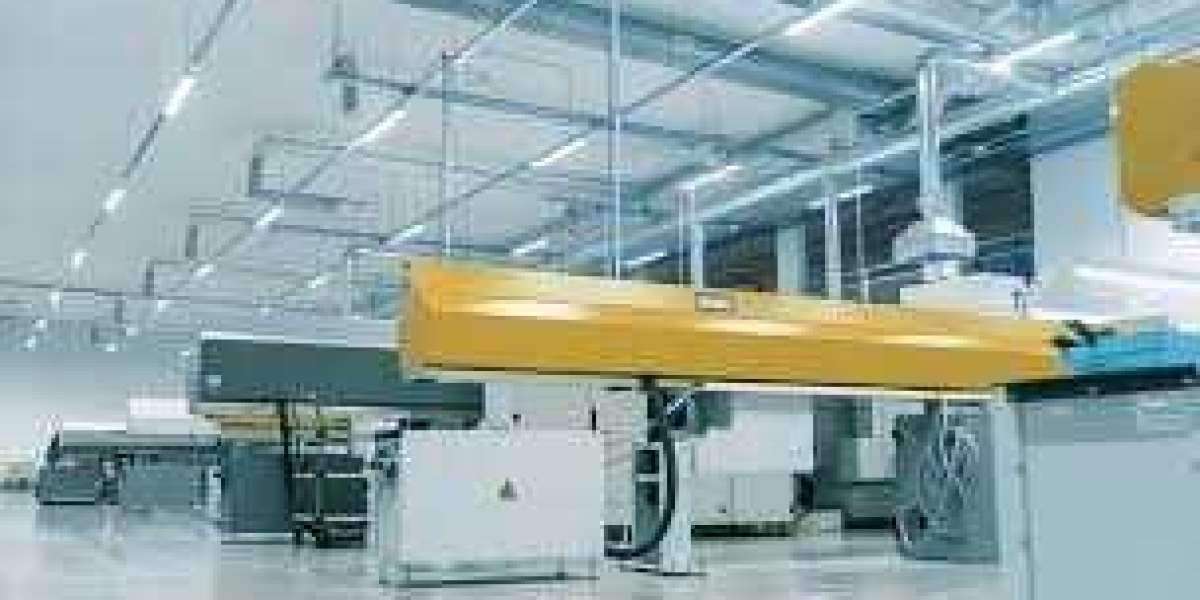Introduction
Medical lighting is a specialized category of lighting systems designed to meet the stringent demands of healthcare environments. These lighting solutions play a pivotal role in enhancing visibility, accuracy, and patient comfort in various medical settings such as operating rooms, examination rooms, and intensive care units. With advanced features such as adjustable intensity, optimal color rendering, and reduced glare, medical lighting ensures that healthcare professionals can perform critical tasks with precision. Furthermore, the use of energy-efficient LED technology and adaptable designs contributes to sustainability and cost-efficiency while improving the overall aesthetics of healthcare facilities. This makes medical lighting a cornerstone in delivering high-quality care and fostering a patient-centered environment.
The increasing focus on modernizing healthcare infrastructure is a key driver of the medical lighting market. Governments and private institutions are prioritizing investments in advanced medical facilities, thereby boosting the demand for high-quality lighting systems. Additionally, the rising prevalence of chronic diseases and the consequent surge in surgical procedures underscore the need for advanced surgical and diagnostic lighting. The widespread adoption of energy-efficient LED solutions, known for their durability and cost-saving attributes, is further propelling market growth. Moreover, the growing emphasis on creating patient-friendly healthcare spaces that promote healing through natural light-mimicking technologies is a noteworthy trend supporting the market's expansion.
Project Scope and Overview
IMARC’s new report titled “Medical Lighting Manufacturing Plant Project Report 2025: Industry Trends, Plant Setup, Machinery, Raw Materials, Investment Opportunities, Cost and Revenue,” provides a comprehensive roadmap for setting up a medical lighting manufacturing plant. The study encompasses all the essential information needed to enter the medical lighting industry. This report offers an in-depth evaluation of the medical lighting manufacturing plant cost, including detailed insights into medical lighting manufacturing plant machinery cost, enabling readers to understand recurring operational expenditures and return on investment. It also presents a practical medical lighting manufacturing business plan, serving as a valuable resource for entrepreneurs, investors, researchers, consultants, business strategists, and anyone with an interest or stake in the medical lighting sector.
Manufacturing Process and Technical Workflow
This report offers detailed information related to the process flow and the unit operations involved in a medical lighting manufacturing plant project. Moreover, information related to raw material requirements and mass balance has further been provided in the report with a list of necessary technical tests as well as quality assurance criteria.
Aspects Covered
- Product Overview
- Unit Operations Involved
- Mass Balance and Raw Material Requirements
- Quality Assurance Criteria
- Technical Tests
Request for a Sample Report:
https://www.imarcgroup.com/medical-lighting-manufacturing-plant-project-report/requestsample
Infrastructure and Setup Requirements
This section presents a comprehensive analysis of key considerations involved in establishing a medical lighting manufacturing plant. It covers critical aspects such as land location, selection criteria, strategic significance of the site, environmental impact, and associated land acquisition costs. In addition, the report outlines the proposed plant layout along with the primary factors influencing its design. Furthermore, it provides detailed insights into various operational requirements and expenditures, including those related to packaging, utilities, machinery, transportation, raw materials, and human resources.
- Land, Location and Site Development
- Plant Layout
- Machinery Requirements and Costs
- Raw Material Requirements and Costs
- Packaging Requirements and Costs
- Transportation Requirements and Costs
- Utility Requirements and Costs
- Human Resource Requirements and Costs
Financial Projections and Economic Viability
This section provides a comprehensive economic analysis for establishing a medical lighting manufacturing plant. It encompasses a detailed evaluation of capital expenditure (CapEx), operating expenditure (OpEx), taxation, and depreciation. Additionally, the report includes profitability analysis, payback period estimation, net present value (NPV), projected income statements, liquidity assessment, and in-depth examinations of financial uncertainty and sensitivity parameters.
- Capital Investments
- Operating Costs
- Expenditure Projections
- Revenue Projections
- Taxation and Depreciation
- Profit Projections
- Financial Analysis
Browse the Full Report with the Table of Contents:
https://www.imarcgroup.com/medical-lighting-manufacturing-plant-project-report
Key Considerations for Plant Design and Operations:
Production Capacity:
The selection of machinery and the design of the plant layout should be aligned with the intended scale of production, which may vary from small-scale operations to large industrial facilities. This alignment ensures optimal utilization of space, resources, and production capabilities.
Automation Levels:
The degree of automation should be adjusted based on factors such as labor availability, budget constraints, and the level of technical expertise. Options may range from semi-automated systems to fully automated solutions, allowing for flexibility in capital investment and operational efficiency.
Location Adaptation:
Plant location should be strategically selected to align with local market demand, ensure proximity to raw material sources, leverage available labor, and comply with regional regulatory requirements. These factors collectively contribute to improved operational efficiency and cost optimization.
Product Flexibility:
The plant should be equipped with processes and machinery capable of accommodating a variety of product specifications. This flexibility enables manufacturers to respond to diverse and evolving market demands effectively.
Sustainability Features:
Incorporating sustainable practices is essential. This includes the integration of renewable energy sources, implementation of efficient waste management systems, and use of energy-efficient machinery to meet environmental standards and long-term sustainability objectives.
Raw Material Sourcing:
The supply chain strategy should be customized to ensure reliable and cost-effective sourcing of raw materials. This approach should consider client-specific requirements and regional supply dynamics to maintain consistent production and manage input costs.
About Us:
IMARC Group is a leading global market research and management consulting firm. We specialize in helping organizations identify opportunities, mitigate risks, and create impactful business strategies.
Our expertise includes:
- Market Entry and Expansion Strategy
- Feasibility Studies and Business Planning
- Company Incorporation and Factory Setup Support
- Regulatory and Licensing Navigation
- Competitive Analysis and Benchmarking
- Procurement and Supply Chain Research
- Branding, Marketing, and Sales Strategy
Contact Us:
IMARC Group
134 N 4th St. Brooklyn, NY 11249, USA
Email: sales@imarcgroup.com
Tel No:(D) +91 120 433 0800
United States: +1-631-791-1145











